Ernesto “Che” Guevara, Revolutionary Poster Boy
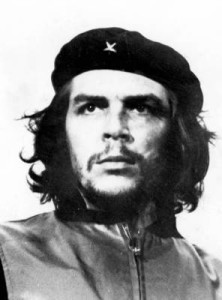
Ernesto Guevara de la Serna was born in Rosario, Argentina on May 14, 1928. His upper class parents forged his birth certificate to read June 14 to conceal the fact that Ernesto was conceived out of wedlock. Ernesto Guevara Lynch and Celia de la Serna y Llosa both came from socially well-connected families. Despite Ernesto Sr.’s attempts at several money-making ventures, the family lived on Celia’s inheritance.
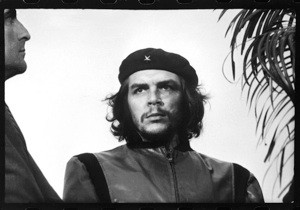
On March 4, 1960 Che Guevara was meeting with industrial management associates in downtown Havana, when a massive explosion ripped through the wharf area of the city. A French freighter, La Coubre, had been unloading armaments directly onto the dock when a momentous explosion occurred. Thirty minutes later, with a massive emergency aid effort underway, another explosion went off, killing even more people. Approximately seventy-five people died and two hundred more were injured in an incident that Castro immediately charged was planned and carried out by the CIA. He ordered a state funeral with a procession through Havana to a speaker’s platform set up in front of the city’s prominent Colon cemetery. Castro used the occasion for a typically lengthy and aggressive speech. Alberto Korda, a former fashion photographer who had joined Castro’s entourage and recorded such events began to photograph various government officials standing in Castro’s vicinity. He suddenly noticed Che Guevara standing off to the side, gazing introspectively into the crowd. Korda had only a few seconds to take two photographs before Che Guevara sat down behind Castro. Although Korda immediately knew he had taken two excellent photos, neither would be published in any newspaper accounts of the memorial. He cropped the palm tree and profile of another individual out of the picture, tilted Che’s head slightly and tacked the photo to the wall of his studio.
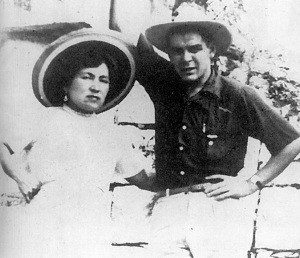
Seems like a rather tense occasion.
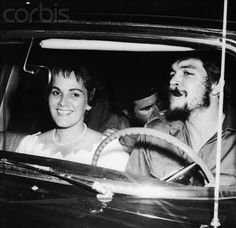
For Che Guevara personally, the grim reality of his marriage also reared its head early in the first days of the Cuban revolutionary government. His wife, Hilda, and daughter arrived from Peru but Che Guevara immediately told her of the “other woman” and asked for a divorce. Hilda later wrote an unverifiably sentimental account of their discussion but the divorce was granted and Che Guevara quickly married Aleida March.
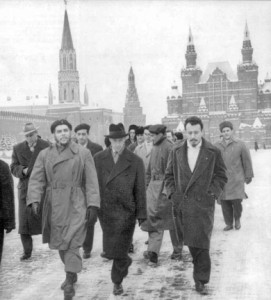
The Bay of Pigs combined with a disastrous Kennedy-Khrushchev summit meeting at Vienna to prompt the most dangerous episode of the Cold War. Thinking that his American counterpart was a weak intellectual who could be intimidated, Khrushchev began negotiations with Castro regarding the installation of nuclear missiles in Cuba. The Soviet Union had been forced to accept similar American missiles in Turkey and the Soviet leader saw an opportunity to humiliate the US and also guarantee Cuba’s security. Castro, with Che Guevara’s enthusiastic urging, agreed, in principle. As an indication of Che Guevara’s importance in the Cuban government hierarchy, it was Che who was sent to the USSR in August of 1962 to finalize the deal.
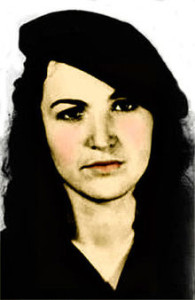
Much of the success of the Cuban revolution was due to a well organized courier underground that allowed the Cuban rebels to communicate their needs at all times. Tamara Bunke aka “Tania” was attempting to serve this purpose and connected with Che’s unit in early January. She had brought with her two agents from Cuban intelligence, Ciro Bustos and Simon Debray. Unfortunately, a Bolivian communist informer tipped off the government as to her true identity and she could no longer return to La Paz where she had been able to inform Havana by coded radio messages as to the progress of and whereabouts of Che’s mission.
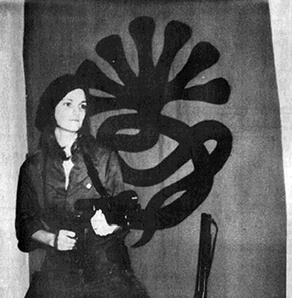
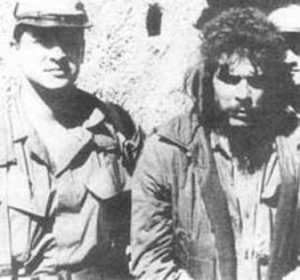
The following morning local senior officials of the Bolivian military as well as Felix Rodriguez arrived in La Higuera by helicopter. Rodriguez would eventually recount his encounter with the captive Che.
“He looked like a beggar, He did not even have a uniform, he did not have any boots, he had some pair of leather tied down to his foot. He was very filthy and it was a tremendous shock to see the way this man looked at this point in time.”
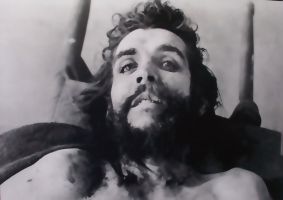
As the sergeant entered, Che supposedly said “I know you have come to kill me. Shoot, coward, you are only going to kill a man.” It was ten after one PM on October 9, 1967. Ernesto “Che” Guevara was thirty-nine years old.
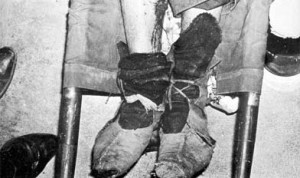
Che, the man was dead. The Bolivian government would do everything possible to diminish his memory. After unceremoniously displaying his body to the international press in a hospital in Vallegrande, Bolivia, they cut off and preserved his hands lest anyone claim that Che had not died and then they buried the body in a secret location in Vallegrande.
Podcast: Play in new window | Download
Subscribe: RSS
